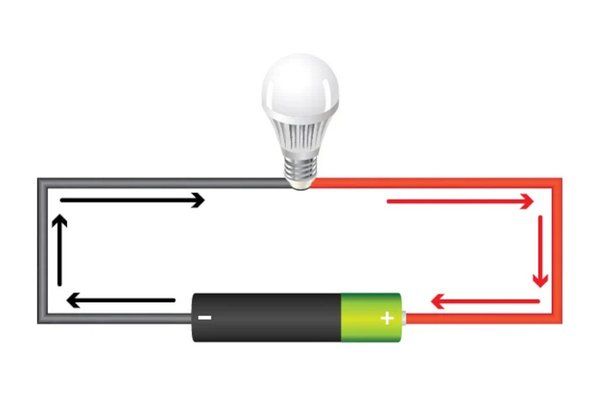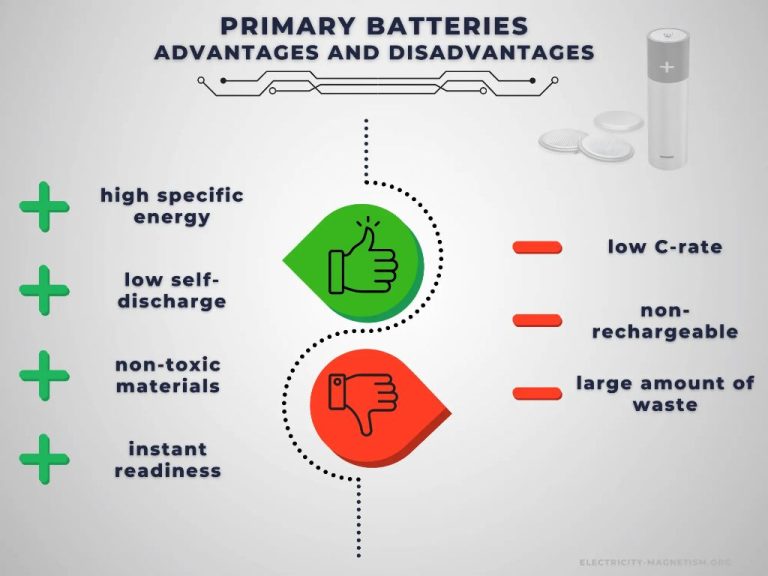What Is An Object That Slows Down The Flow Of Electricity?
What is Electrical Resistance?
Electrical resistance is the measure of how much a material opposes the flow of electric current. It is defined by Ohm’s Law, which states that the current flowing through a conductor is directly proportional to the voltage applied, for a given resistance. The resistance of a material or circuit component is measured in ohms, represented by the symbol Ω.
There are several key factors that determine the electrical resistance of a material or component:
- Resistivity – This is an intrinsic property of the material itself that measures how strongly it impedes current flow. Materials like copper have low resistivity, while insulators like rubber have high resistivity.
- Length – Longer conductors have higher resistance, as there is more material for electrons to pass through.
- Cross-sectional area – Conductors with a larger cross-section (thicker wires) have lower resistance, providing more area for electrons to flow.
- Temperature – Most materials increase in resistance as temperature rises. This is because higher temperatures cause more chaotic atomic vibrations, impeding electron flow.
By understanding what factors affect resistance, we can design components and circuits to have specific desired resistances for different applications.
Common Resistors
There are several types of common resistors used in circuits:
Wire-Wound Resistors
Wire-wound resistors are made by winding a metal wire, typically nichrome, around an insulating core made of ceramic or fiberglass. The resistance value depends on the length, diameter, and material of the resistor wire. Wire-wound resistors can handle high power and have a low temperature coefficient, making them suitable for high-precision applications.
Carbon Film Resistors
Carbon film resistors are made by depositing a film of carbon resistive material on an insulating cylindrical core. They are inexpensive and available in a wide range of resistance values. However, carbon film resistors have greater temperature dependence and tolerance compared to other types.
Metal Oxide Film Resistors
Metal oxide film resistors are made by depositing a metal oxide film on a ceramic core. They offer better temperature stability and tolerance compared to carbon film resistors. However, they are more expensive and have lower power ratings.
Resistor Color Coding
Resistors use a color coding system to indicate the resistance value. Colored bands are painted around the body of axial lead resistors. The first two bands indicate the first two digits of the resistance value, the third band is the multiplier, and the fourth band indicates the tolerance percentage. For example, bands of blue, gray, red, gold indicate 6,800 ohms with 5% tolerance.
Insulators
An electrical insulator is a material that resists the flow of electric current. Insulators have very few free electrons that can move to create an electric current. Some common materials that act as excellent insulators include glass, plastic, rubber, ceramics, wood, and air. These materials have tightly bound atoms that make it difficult for electrons to move freely.
When an electric current encounters an insulator, the lack of free electrons in the material causes resistance to the flow of electrons. The electrons bump into the tightly bound atoms of the insulator, which slows down the movement of the electrons and inhibits the current. This property allows insulators to be used to coat wires and cables. The insulating material protects people from accidental contact with electricity.
Insulating materials are used to make switch handles, electrical outlet covers and other protective barriers. Without insulators, uncontrolled electrical discharge and short circuiting could occur. Overall, insulators are essential for controlling and directing the flow of electrical current safely.
Semiconductors
Semiconductors are materials that have a electrical conductivity between that of a conductor, like copper, and an insulator, like rubber. Their unique properties allow them to act as either conductors or insulators depending on environmental conditions like temperature or the presence of impurities.
Some common semiconductor materials include silicon, germanium, gallium arsenide, and silicon carbide. Of these, silicon is by far the most common and widely used in electronics.
The conductivity of semiconductors can be precisely controlled through a process called doping, where impurities are intentionally introduced into the semiconductor material. Adding doping atoms, which have more or less electrons than the semiconductor itself, allows the material’s conductivity to be fine-tuned. This is critical for building electronic components like diodes, transistors, and integrated circuits.
Variable Resistors
Variable resistors, also known as adjustable resistors, are components whose electrical resistance can be adjusted. Unlike fixed resistors with a constant resistance value, variable resistors allow users to manually tune the resistance as needed for different applications.
There are several types of variable resistors:
Potentiometers – These have 3 terminals and a sliding contact that moves along a resistive strip to vary the resistance. They are often used in volume controls, sensors, and other adjustable electronic circuits.
Photoresistors – Made of semiconductor materials like cadmium sulfide, their resistance decreases when light shines on them. Photoresistors are used in electronics to detect light levels.
Thermistors – Using semiconductor materials like metallic oxides, thermistors change resistance based on temperature. Thermistors can measure temperature changes in circuits.
Variable resistors are commonly used in many applications where manual resistance adjustment is needed. These include volume and tone controls in audio devices, sensors and transducers, timing and pulse circuits, and temperature measurement and compensation circuits. The tunable nature of variable resistors makes them extremely versatile for creating flexible, interactive electronic systems.
Resistance in Circuits
The resistance in a circuit determines the amount of current that will flow through the circuit for a given applied voltage. This relationship is described by Ohm’s law:
V = IR
Where V is the voltage (in volts), I is the current (in amps), and R is the resistance (in ohms). For a given voltage, higher resistance results in less current, while lower resistance allows more current to flow.
Resistance also determines the voltage developed across a resistor for a given current flow. Using a rearranged version of Ohm’s law:
R = V/I
So for a fixed current, higher resistance leads to more voltage dropped across the resistor.
In circuits with multiple resistors, the total resistance depends on whether the resistors are arranged in series or parallel.
In series circuits, the total resistance is the sum of the individual resistances:
Rtotal = R1 + R2 + R3…
So in series, total resistance increases and less total current flows.
In parallel circuits, the reciprocal of total resistance is the sum of the reciprocals of the individual resistances:
1/Rtotal = 1/R1 + 1/R2 + 1/R3…
So in parallel, total resistance decreases and more total current can flow compared to each resistor individually.
Understanding resistance and how it operates in series and parallel is key to analyzing the behavior of electric circuits.
Reducing Resistance
There are several ways to reduce the resistance in an electrical circuit. Some common methods include:
Using Thicker Wires
One of the easiest ways to reduce resistance is by using wires with larger cross-sectional area. Thicker wires provide less restrictive paths for electrons to flow through, lowering the overall resistance.
Using Materials with High Conductivity
Materials like copper and aluminum have very high conductivity, allowing electricity to pass through with little resistance. Using wires made of highly conductive metals and alloys will minimize resistance.
Shortening the Wire Length
Resistance is directly proportional to the length of the wire. Shortening the distance electricity has to travel reduces the total resistance in the circuit.
Lowering Wire Temperature
Resistance increases with higher temperatures. Keeping wires and connections cool, such as through proper insulation, reduces electrical resistance.
Using Superconductors
Superconducting materials like ceramics, alloys, and exotic compounds can achieve zero electrical resistance when cooled to extremely low temperatures. They allow unimpeded electron flow for applications where minimum resistance is critical.
Low resistance is important for applications like power transmission over long distances, electric motor windings, computer processors, and precision instruments. Reducing resistance allows more current to flow for the same applied voltage, enhancing efficiency and performance.
Increasing Resistance
There are several ways to increase the resistance in an electrical circuit. Some common methods include:
Using Thinner Wires
One of the easiest ways to increase resistance is by using thinner wire gauges. Thinner wires have less cross-sectional area, which increases the resistance to electron flow. For example, a 28 AWG wire has higher resistance than a 14 AWG wire.
Adding Resistors
Discrete resistors can be added in series to increase the total resistance in a circuit. Standard resistor values range from fractions of an ohm to millions of ohms. Multiple resistors can be combined to finely tune the resistance.
Replacing Conductors with Insulators
Replacing good conductors like copper with poor conductors like rubber or plastic in a circuit will increase the resistance. Insulators have very high resistivity compared to conductors.
Lengthening the Current Path
Increasing the length of the wires and conductors in a circuit will also increase the total resistance proportionally. The longer path electrons have to flow through, the higher the resistance.
Applications of Higher Resistance
Some common uses and applications of higher resistance in circuits include:
– Current limiting – Prevents overload and restricts current flow to protect components.
– Voltage division – Creates a voltage drop to divide voltages evenly across different paths.
– Power dissipation – Converts excess voltage/power to heat through resistors.
– Bleeder resistors – Discharge capacitors safely when power is removed.
– Pull up/pull down resistors – Establish default high/low voltages in logic circuits.
– Surge protection – Protect against voltage spikes and electrical noise.
– Time delay circuits – Introduce delay into timing circuits.
– Sensitivity controls – Allow adjustment of sensor circuit sensitivity.
Measuring Resistance
In order to measure resistance, specific instruments are used to apply a voltage or current and measure the resulting current or voltage. The most common tools for measuring resistance are ohmmeters, multimeters, and four-wire measurements.
An ohmmeter is a device designed specifically to measure resistance in ohms. It contains a battery to supply a known voltage or current and measures the resulting current or voltage to determine the resistance based on Ohm’s Law (R = V/I). Ohmmeters often have different measurement ranges to measure from very low resistances up to megaohms.
A multimeter is another common tool used to measure resistance. Multimeters have a resistance measurement setting and contain circuitry to determine resistance. They can measure a wide range of resistances. Advanced multimeters may also incorporate four-wire measurements.
Four-wire measurements involve using separate pairs of current-carrying and voltage-sensing wires to make more accurate resistance measurements. This eliminates errors caused by wire resistance. Four-wire measurement is considered the most accurate technique for precision resistance measurement.
Resistance Safety
Working with electrical resistance can be hazardous if proper precautions are not taken. Excessive current flow through a resistor can lead to excessive heat buildup, which can cause fires, damage to equipment, and personal injury. Here are some key things to keep in mind regarding resistance safety:
Hazards of Excessive Current Flow
When current flows through a resistor, some energy is lost in the form of heat. The higher the current, the more heat is generated. If too much current flows for too long, this heat can build up to dangerous levels. Resistors have power ratings that indicate how much power they can safely dissipate as heat. Exceeding this power rating can cause the resistor to overheat, melt, or even catch fire.
Preventing Fires/Damage from Resistance Heating
To prevent fires and equipment damage from excessive resistor heating, follow proper design principles. Size resistors appropriately for expected current levels. Use resistors with suitable power ratings and ensure adequate ventilation/cooling. Avoid short circuits which can instantly send current surges. Install current-limiting devices like fuses or circuit breakers. Monitor temperatures during testing and normal operation.
Fuse/Circuit Breaker Sizing
For safety, circuits should be protected with properly rated overcurrent devices like fuses or circuit breakers. These devices are sized to allow normal current flow, but open the circuit if excessive current occurs. For resistors, choose overcurrent devices rated slightly above the maximum expected current draw. This prevents nuisance tripping while still protecting the resistor and wiring from damage in overload conditions. Follow all applicable electrical codes for overcurrent device selection.






